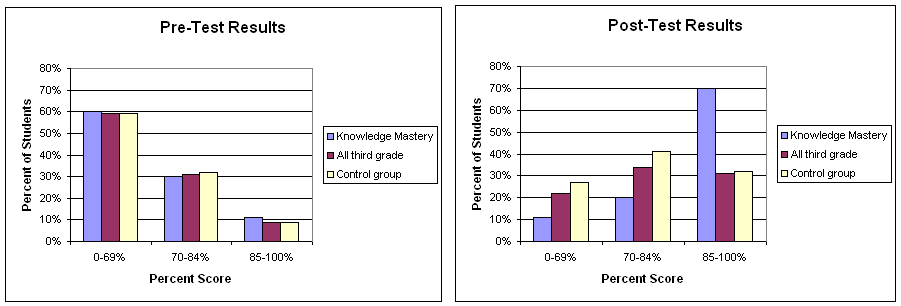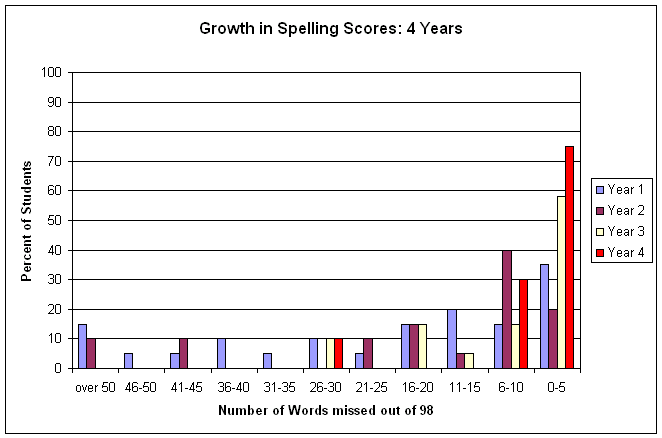"Feels Like Learning"
Knowledge Mastery™
Results

Elementary Math
The graphs compare data from the beginning of the year and the end of the year for standards-based 3rd grade math classes in Nebraska. In one group, teachers used traditional methods and achieved "Bell Curve" results - where most student scores are mediocre. The teacher in the second group used the techniques taught in Knowledge Mastery and achieved "J-Curve" results - where most student scores are high. Knowledge Mastery is designed to create as many winners as possible.

Elementary Spelling
The graph above shows four years of continuous improvement in spelling. This second grade teacher achieved the expected "J-Curve" results her first year using the techniques in Knowledge Mastery. Then, she dedicated herself to moving that curve further and further to the right each year. She accomplished her goal by integrating what she learned about systems thinking and improving the classroom culture with the Knowledge Mastery process. As you can see, each year her second graders were better spellers then the previous year's class. This is quite an accomplishment when you do not get to choose the students that come in each year.

Junior High/Middle School
When students score well, teachers may assume they were lucky to have a good group of students. Knowledge Mastery provides a system where great results and improvement are achievable, regardless of the student group. Students and teachers collect process data to visualize their progress and make continuous adjustments to teaching and learning. The teacher may also integrate successful interventions into following classes to increase learning from year to year. The data above represents three years from course finals on two middle school campuses. The only constants were the teacher and the Knowledge Mastery process.

High School
In high school, student ability levels can vary tremendously from one period to the next. Knowledge Mastery is a formative assessment system that levels the playing field without lowering standards, so typical low achievers can close the achievement gap. The data above came from course finals in three different periods of high school, junior level U.S. History